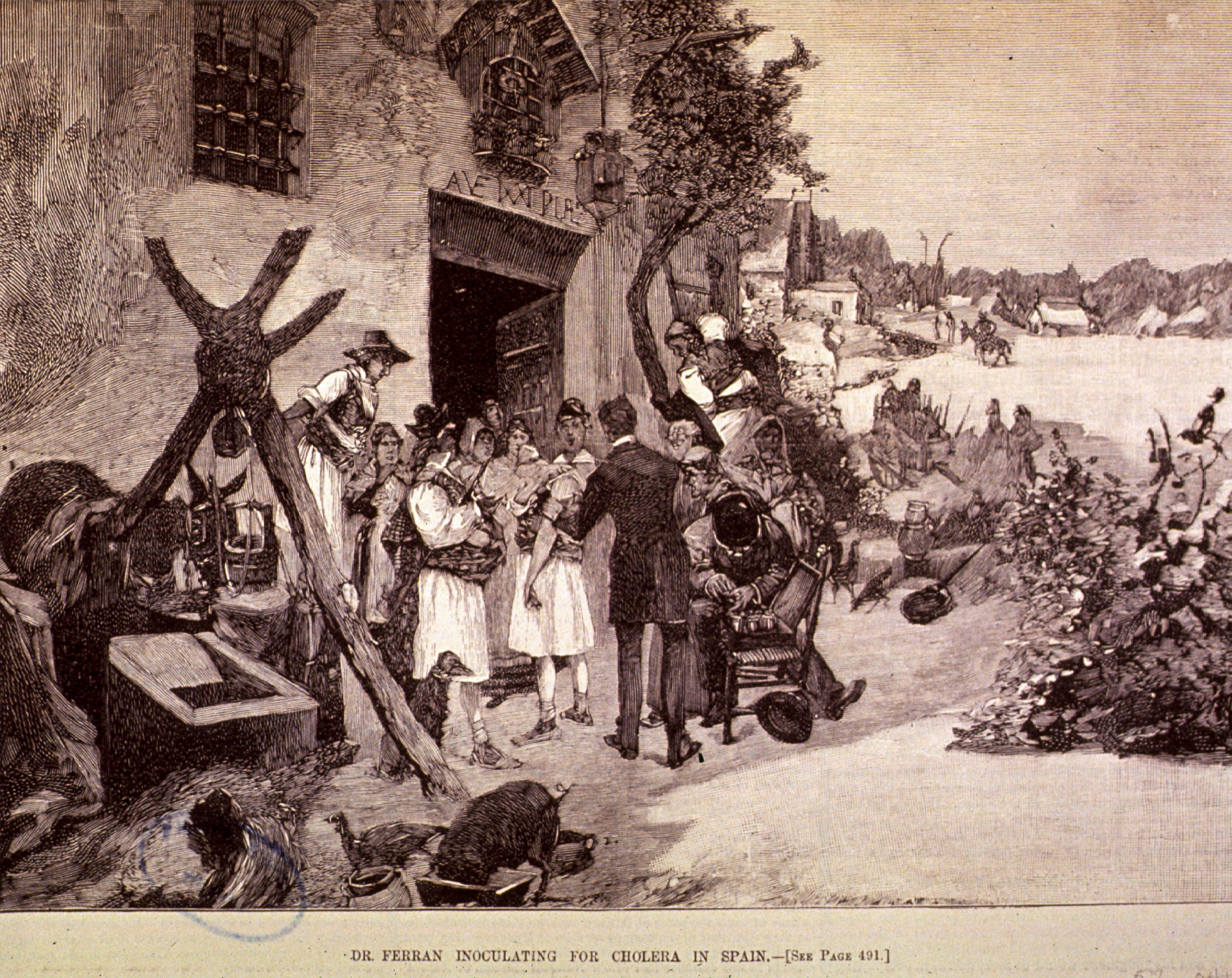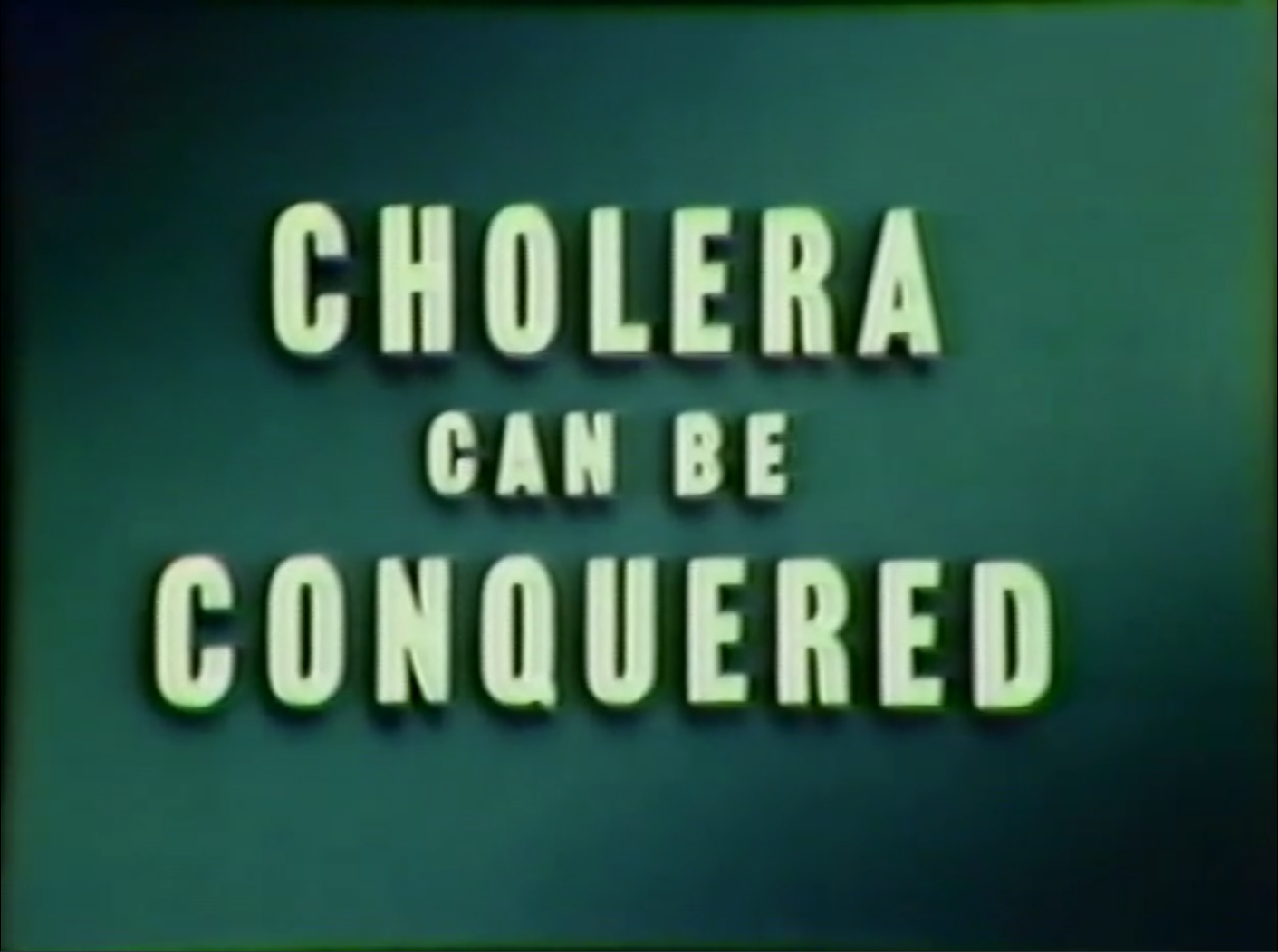Cholera
Cholera is a bacterial disease transmitted in water or food contaminated with Vibrio cholerae bacteria and has existed since at least 500 B.C. Symptoms typically include diarrhea and vomiting and can be mild or fatal.
The earliest discovery of the bacterium was in 1854 by Italian Filippo Pacini. His work went mostly unnoticed.
The inside cover of Cholera and the Water Supply in the South Districts of London, in 1854 by Dr. John Snow. National Library of Medicine
In the 1880s, Dr. Robert Koch discovered cholera bacteria, traveling from Germany to Egypt and India during outbreaks. They confirmed the bacteria during autopsies and concluded it was linked to infected water supplies. Koch also discovered that people infected with cholera were protected from it afterwards.
In 1885, Spanish doctor Jaime Ferran, who studied under Louis Pasteur (Koch’s rival), created the first cholera vaccine from working with live bacteria. He did a mass vaccination (50,000 people) during an outbreak in Spain.
Two scientists, Sawtschenko and Sabolotny, experimented with a killed cholera bacteria “broth” in 1893, which prevented cholera but was impractical because it required many doses.
There was an epidemic of cholera in Thailand in May 1958, and the World Health Organization, and Philippine and American officials sent vaccines and other aid to Thailand. The King and Queen of Thailand, Their Majesties King Bhumibol Adulyadej and Queen Sirikit, were invited to attend the dedication ceremony of the NIH's Building 29, the newly built home of the Division of Biologics Standards (DBS), in June 1960 because of his majesty’s active role in the South East Asia Treaty Organization (SEATO) Cholera Research Project. The SEATO Cholera Research Project formed in the wake of the epidemic.
Dr. Pittman was active with SEATO and traveled to the cholera research laboratory in Dacca, East Pakistan (now Bangladesh). For five years she was the SEATO Cholera Research Project director at the NIH. Pittman helped design the laboratory, the equipment, and the research that would take place at SEATO. With Pittman leading the team their findings demonstrated that the effectiveness of a cholera vaccination directly relates to its potency assay. This research project also verified the importance of IV restorative fluids in treatment procedures for victims of cholera. Today SEATO has been replaced by the International Center for Diarrhoeal Disease Research, Bangladesh.
The 1980s and 1990s brought increased research and understanding of the complexity of the cholera bacteria, leading to many more vaccines around the world. Trials around the world expanded knowledge on the theory of herd immunity or herd protection. Vaxchora, approved by the FDA in 2016 and which is the vaccine currently in use, is a single-dose vaccine taken before traveling to at-risk areas.
Interior of a Philippine government laboratory where officials are checking an initial shipment of 200,000 doses of cholera vaccine. There was an epidemic of cholera in Thailand in May 1958. Millions of doses of vaccines, along with technical advisors, and other medical equipment were airlifted to Thailand. World Health Organization (WHO)




